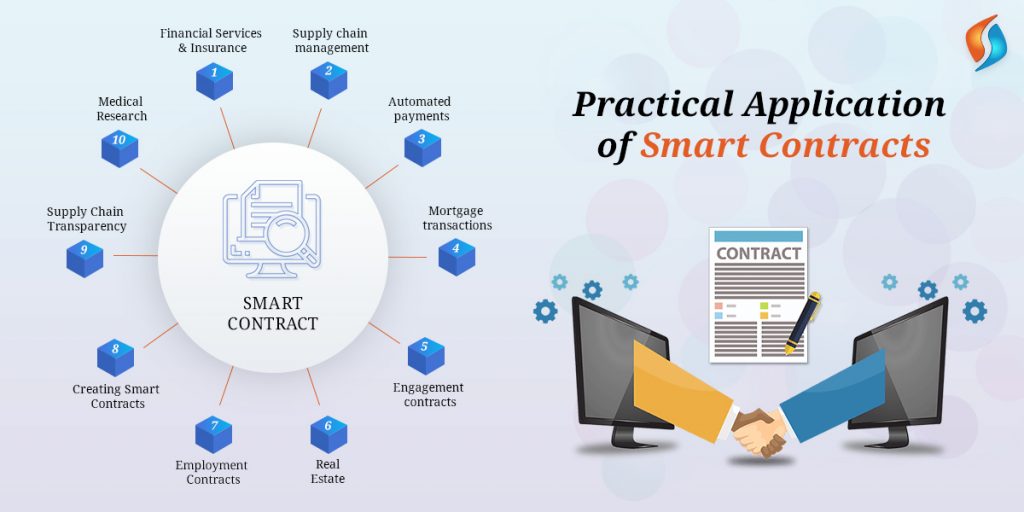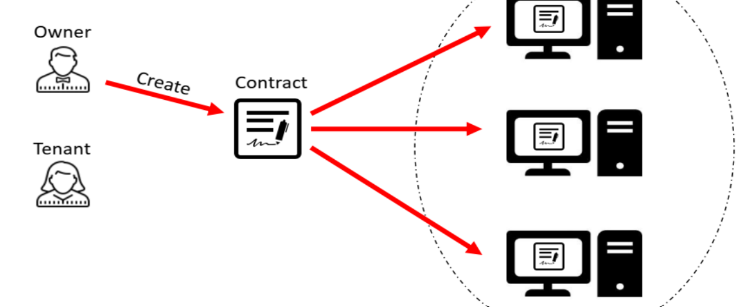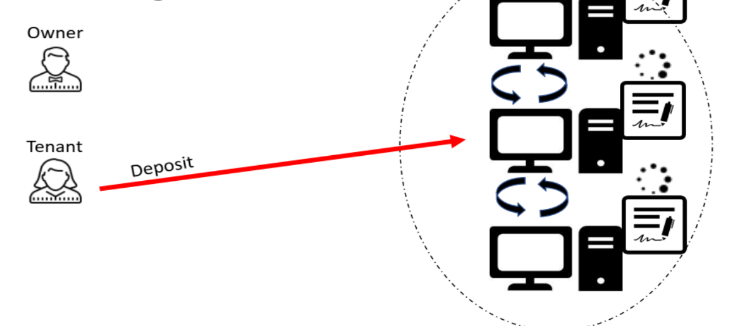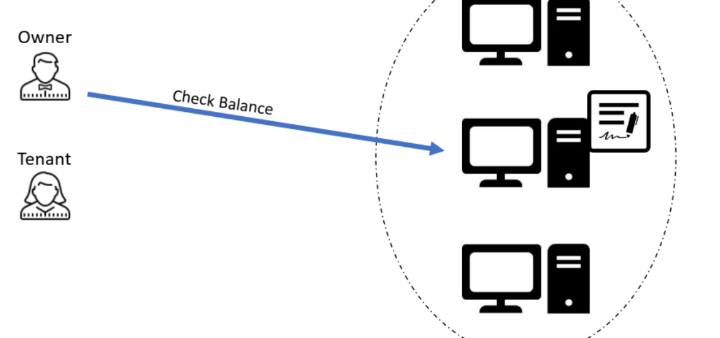How to Implement Smart Contracts on the Ethereum Blockchain Network?
Introduction
Ready to take your business to the next level? Introducing smart contracts – the future of contract management. With the power of blockchain technology, these agreements offer fast, secure, and transparent solutions for both businesses and individuals. Goodbye back and forth and fine print. Hello, revolution. Learn more about the game-changing power of smart contracts now!
A smart contract is a computer protocol that streamlines, verifies, and enforces contract negotiation or performance. Invented by Nick Szabo in 1996, smart contracts provide a range of benefits for decentralized applications, including but not limited to cryptocurrencies.
The advantages of smart contracts over traditional contracts are numerous. One of the main benefits is the automatic execution of these agreements, allowing for completion without needing third-party involvement. This saves time and money and reduces the risk of errors or fraud. Upgrade your contract game with smart contracts today!
Learning Objectives
This blog mainly gives you a basic understanding of a smart contract and how it works in an Ethereum network. We will discuss the applications and use cases of smart contracts. Also, you get a practical example of how a smart contract works in landing a house on rent. After that, you will learn about some basic codes like sending and receiving funds in your ether wallet. And finally, we will conclude the blog by discussing more tools to code in the Ethereum network.
This article was published as a part of the Data Science Blogathon.
Table of Contents
- Use & Applications of Smart Contracts
- Example of Smart Contract
- Tools to Code Smart Contracts
- Deployment Parameters
- Code a Basic Smart Contract
- Conclusion
Use & Applications of Smart Contracts
Smart contracts are self-executing contracts with the terms of the agreement written directly into lines of code. They have a wide range of potential use cases and applications, some of which include:
- Real Estate: Smart contracts can be used to automate the buying and selling of property, as well as the management of rental agreements.
- Banking and Financial Services: Smart contracts can automate financial transactions, such as the issuance of loans, the execution of derivatives, and the clearance and settlement of securities trades.
- Voting: Smart contracts can create secure and transparent voting systems.
- Gaming: Smart contracts can create decentralized gaming platforms where players can interact with each other and the game directly without the need for a central authority.
- Identity Verification: Smart contracts can create a decentralized system for identity verification, where users can control and share their personal information.
- Internet of Things (IoT): Smart contracts can be used to automate the management of IoT devices, such as tracking and reporting sensor data.

Example of Smart Contracts
The working flow of a smart contract can be divided into three parts.
1. First, both parties involved in the contract agree to the terms and conditions of the contract.
2. Secondly, the contract is written in code and stored on a blockchain.
3. Finally, the contract is executed automatically when the contract conditions are met.

Let’s consider a basic example:
Suppose a house owner wants to lend their property to a tenant. They can use smart contract technology to automate the process and ensure that both parties can trust each other. They write a smart contract that states that the property papers will be released to the tenant when they complete the total payment to the house owner. This way, the tenant only receives the house papers once they have fulfilled their agreement by making the full payment.
The process begins with the house owner creating a Smart Contract and pushing it into the Ethereum network. This Smart Contract contains the rules that dictate the transfer of property papers to the tenant once the full payment is received. The tenant can then provide the payment to the Smart Contract, which will automatically verify and confirm the payment. Once the payment is confirmed, the Smart Contract releases a token to the tenant as proof of successful payment. At this point, the tenant receives the property papers. Firstly the Owner creates an agreement and stores it in the Blockchain Network.

In the image, the tenant provides the required payment for the property to the Smart Contract in the Ethereum network. This payment is typically made in the form of cryptocurrency, such as Ether, which is the native cryptocurrency of the Ethereum network.
When the tenant initiates the payment, the required amount is subtracted from their wallet and transferred to the Smart Contract. The Smart Contract then verifies that the payment is valid and confirms the transaction. Once the transaction is confirmed, the payment is added to the owner’s wallet.

Once the payment has been transferred to the owner’s wallet and confirmed by the Smart Contract, the owner can check the increased amount in their wallet. This can be done by logging in to their wallet and checking the balance or using a block explorer, which allows users to view the transactions on the blockchain. In this case, the Smart Contract has been programmed to release the property papers to the tenant once the full payment has been received.

Finally, the owner checks the balance, and the property papers are automatically released.
Tools to Code Smart Contracts
Online tools are typically web-based applications that allow users to write, compile, and deploy smart contracts. Some popular online tools include Remix, Ganache, and MyEther Wallet.
Regarding coding smart contracts, a few IDE options are available. Here are a few popular ones:
1. Remix:
Remix IDE is a powerful tool for developers to create, test and deploy smart contracts on the Ethereum blockchain. It is an online IDE that provides a suite of tools for developers to interact with the Ethereum blockchain. The remix is a project of the Ethereum Foundation.
Remix IDE provides a user-friendly interface for developers to write and deploy smart contracts. It also includes a debugger and a testing environment. The remix is available as a web-based IDE and as a desktop application. A remix is an excellent tool for developers who want to learn how to develop smart contracts on the Ethereum blockchain. It is also a valuable tool for experienced developers who want to create and test new smart contracts.
2. Geth:
GETH is a command-line interface for running a full Ethereum node developed by the Ethereum Foundation. It is written in the Go programming language and allows users to interact with the Ethereum blockchain and create, deploy, and execute smart contracts.
3. Ganache:
Ganache is a personal Ethereum development blockchain that can deploy contracts, develop your applications, and run tests. It is available as a standalone application or as a command-line tool.
4. MyEther Wallet:
MyEtherWallet (MEW) is an open-source, client-side interface for interacting with the Ethereum blockchain. It allows users to create, store, and manage their Ethereum and Ethereum-based (ERC-20) tokens. MEW can be accessed through a web browser or as a mobile app.
Deployment Parameters
There are various deployment parameters that we must need to check before writing a smart contract. Some of them are given and explained below.
1. JavaScript VM: All the transactions will be executed in a sandbox blockchain in the browser. Nothing will be persisted, and a page will restart a new blockchain from scratch. The old one will not be saved.
2. Injected Provider: Remix will connect to an injected web3 provider. Mist and Metamask is an example of a provider that injects web3. Thus they can be used with this option.
3. Web3 Provider: Remix will connect to a remote node. You will need to provide the URL address to the selected provider: geth, parity, or any.
4. Gas Limit: The maximum amount of gas that can be set for all contract instructions.
5. Value: Input some ether with the next created transaction (wei = 10-18 of ether).
Code Basic Smart Contracts
In this section, we will write a basic code to complete a financial contract using the Solidity programming language.
Firstly we will define the solidity version and then writes the primary function. In this function, we will write two sub-functions, i.e., getBalance() and deposit(). The first function is used to get the current balance of the user, and the second function is used to deposit a new amount on the existing balance of the user.
pragma solidity ^0.5.0;
contract financialContract {
uint balance = 313000;
function getBalance() public view returns(uint){
return balance;
}
function deposit(uint newDeposit) public{
balance = balance + newDeposit;
}
}
There is another function named setValue(), which takes a parameter and sets the existing balance of the user to a new amount passed as a parameter.
function setBalance(uint newAmount) public{
balance = newAmount;
}
Conclusion
In this article, we have learned about the working of Smart Contracts and discussed the various tools and languages we can use to code them.
There are also several tools where you can practice coding Smart Contracts without purchasing real Ethers with real money. Tools like Ropsten, Kovan, and Rinkeby are existing public blockchains used for testing and do not use real funds. Use a faucet for receiving initial virtual funds.
Also, Ganache sets up a personal Ethereum blockchain for running tests, executing commands, and inspecting the state while controlling how the chain operates.
The major points of this article are as follows:
1. Firstly, we have discussed the basic introduction of smart contracts and their applications in the fields like healthcare, transportation, supply chain management, etc.
2. Then, we discussed an example of a smart contract of how it works when someone lends their property to a tenant. The tenant will only get the property papers when he/she gives a full payment to the owner.
3. After that, we discussed some tools for coding Smart Contracts like Remix, Geth, and Ganache and discussed their pros and cons. And finally, we have provided a practical code to send and receive funds in the ether wallet.








